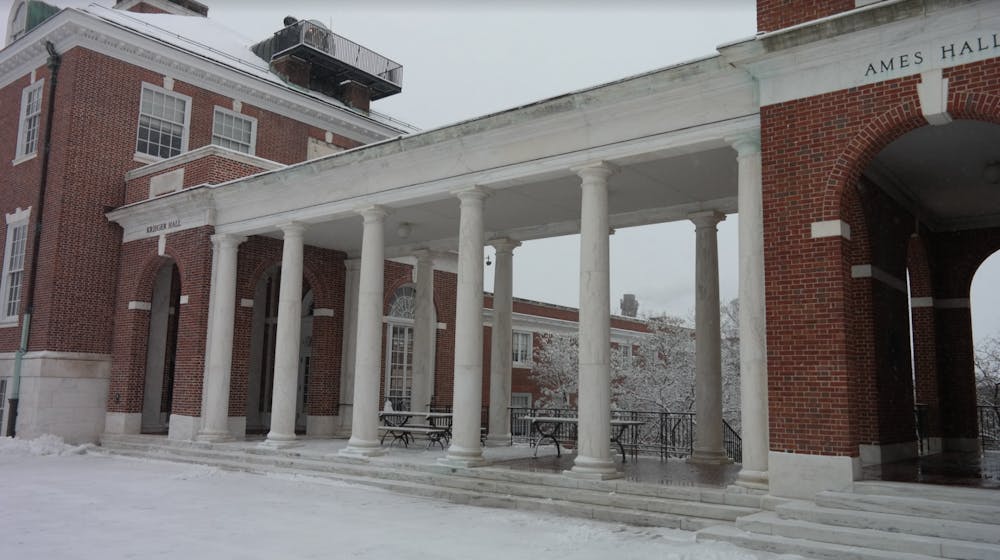The East Asian Studies and International Studies departments co-hosted “Blue-Water Horizon: One Thousand Years of the Sino-Southeast Asian Embrace” on Friday, Jan. 29 as part of the Social Science Research Council’s (SSRC) Chinese Diasporas and Transnational Public Spheres in the Long 20th Century grant.
At the event, Eric Tagliacozzo, a history professor at Cornell University, discussed the historical mixture of Chinese and Southeast Asian cultures. The event was assisted by an SSRC Transregional Research Junior Scholar Fellowship with funds provided by the Andrew W. Mellon Foundation. Huei-Ying Kuo and Sydney Van Morgan are the grant’s primary investigators.
Vice Dean for Faculty Affairs and International Research Cooperation Andrew Mertha commended the breadth of Tagliacozzo’s work while introducing him.
“Professor Tagliacozzo’s scholarship looks at all of the intersections of the humanities and the social sciences — centered on the history of people, ideas and material in motion — using the very tools of the humanities and social sciences, and he does so through an ever-widening aperture,” Mertha said.
Tagliacozzo believes that the common narrative of trade on the Silk Road in Asia is too limited, explaining that trade routes through the seas are much more emblematic of the majority of the historical trade of cultures, people and goods and the contact of various Southeast Asian societies.
“It is the blue horizon that we should look to much more than the desert waste,” he said.
In an email to The News-Letter, History Professor Tobie Meyer-Fong highlighted what she learned from the event.
“The material that [Tagliacozzo] covered in his talk reminded me of the value of considering Asian history from the vantage point of the seas as well as from the land,” she wrote. “It also provided a valuable account of both the history and historiography of maritime Asia, including references to important works by Anthony Reid, Janet Abu-Lughod, and Edward Schafer.”
Tagliacozzo also emphasized the importance of art in our knowledge and understanding of these historical trade routes in his presentation.
“We know of this trade because of pieces of art that depict large factory-esque buildings with ceramic jars stacked to the roof, drawings of jars drying outside on a roof and even cave paintings from Aboriginal Australians that show massive ships coming from Indonesia and China,” he said.
According to Tagliacozzo, ceramics also reveal the cultural differences between their producers and consumers. For example, Chinese merchants painted dragons, which are part of the zoological tradition of China, on their ceramics. These dragons, however, were interpreted as crocodiles in Southeast Asia because the people there were unfamiliar with the concept of dragons.
Rebecca Brown, a professor of art history who focuses on India in the 18th to 20th century, commented on Tagliacozzo’s ability to incorporate art into his presentation.
“[He] did a beautiful job of showing how ceramics flow across lands and are incorporated into various cultures in distinctly different ways,” she said.
Tagliacozzo posited that people can also understand the exchange from Southeast Asia to China through the content being traded.
“Leatherback turtle shells, green turtle shells and hawksbill shells were being traded, and this shows us what pressures were on the environment,” he said.
Meyer-Fong underscored the importance of Tagliacozzo’s themes in greater discussions of race and ethnicity in an email to The News-Letter.
“I found myself thinking that his content and argument would be hugely useful to teachers of world history, who too often get caught up (even now!) in cheap comparisons between ‘the West’ and the ‘the rest,’” she wrote.





